|
|
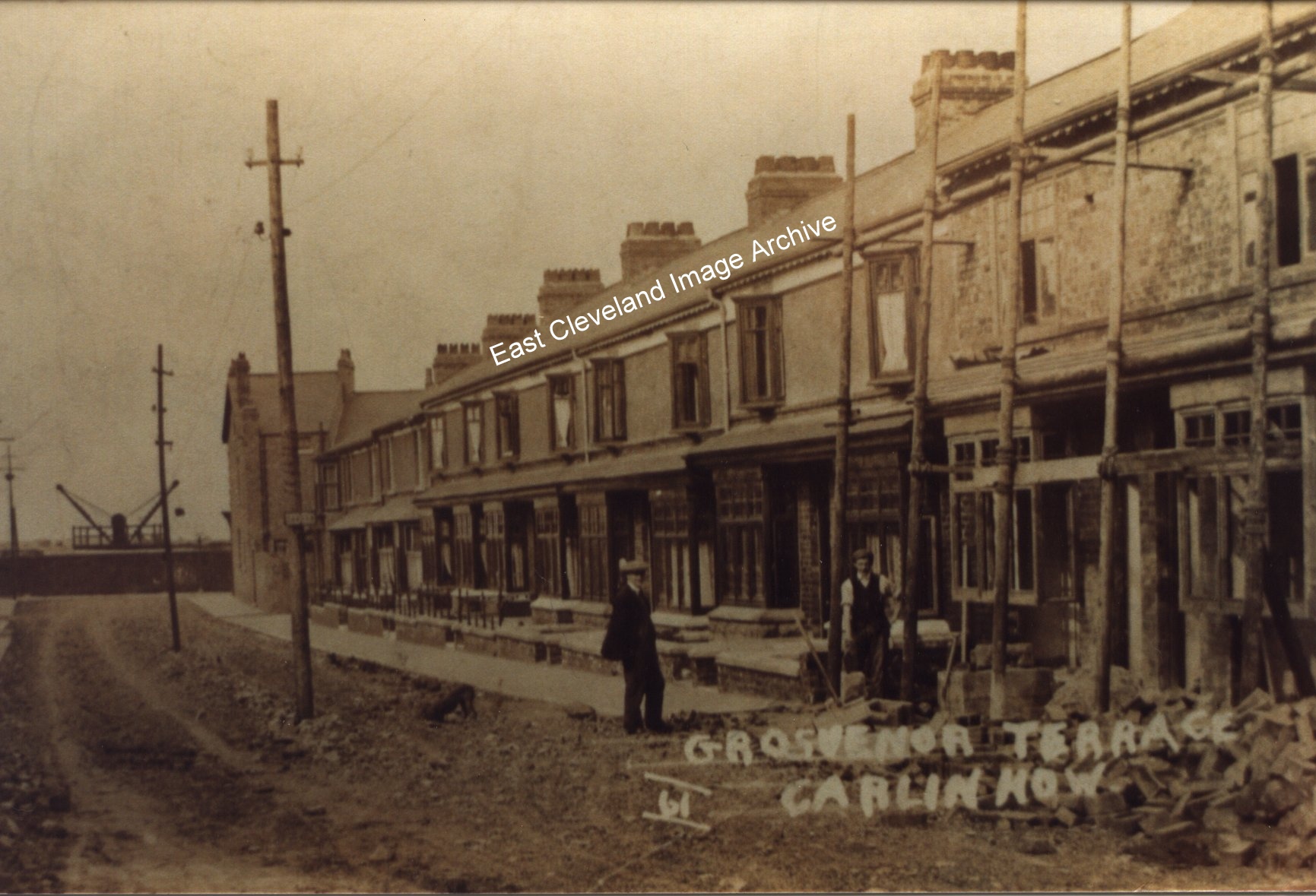
Initially the Archive noted this picture of Grosvenor Terrace in 1911 appeared to show completion of the terrace. However Alan Pearson advised: “This would only be completion of the half of Grosvenor Terrace up to Stan Massey’s house. The 1915 Ordnance Survey map seems to show the top half still uncompleted, although Queen Street, Coronation Street, and part of Gladstone Street are there by then”. However the image also provoked discussions; Derick Pearson advised: “Note the heavy gauge wood scaffolding that was used in those days. It took a lot more putting together than the man today could with a couple of spanners hung in his side pods and a handful of ready-made clips “. Eric Johnson also commented: ” I noticed the ‘double’ jib crane, in the background of the photograph, which appears to be inside the works. I have some knowledge of steelworks machinery, but this construction puzzles me”. Derick Pearson assisted with: “I have only seen this once before at Warrenby Steelworks in the mid 1960s. It was mounted on a long bed railway truck. It was not a Jib Crane, but a different configuration altogether. Now if it was on a truck as the one I saw at Warrenby, could it have been Railway equipment? More importantly, there were differing dates for the filling in of the viaduct and the work which went on around the lower lines under the viaduct, but as this is 1911 it could well have played a part in that work as the work was not complete until 1913 according to most sources. When the photo is zoomed in, one can clearly see lifted loads on both sides. The one on the right is high up about the height of the center rope drum top and the one on the left just above the sleeper fence/wall. Is it what might be called a Double Derrick type”. The Archive asks can anybody help in identifying the gentlemen in the photograph?
Image from a collection compiled by Derick Pearson; thanks to Eric Johnson, Derick Pearson and Alan Pearson for the updates.
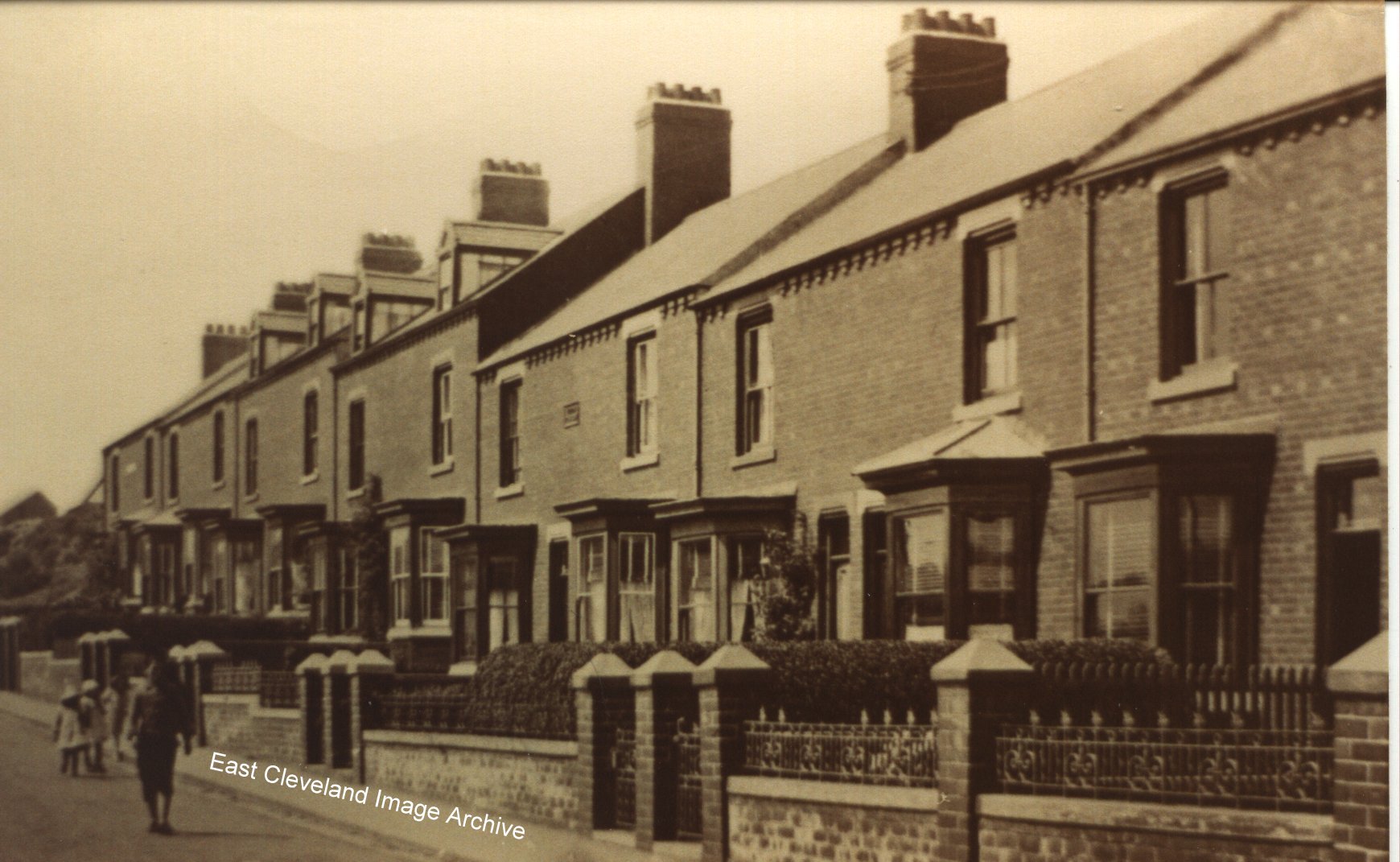
How quiet the road where children can wander or play without fear; how it is changed now!
Image courtesy of Keith Bennison.
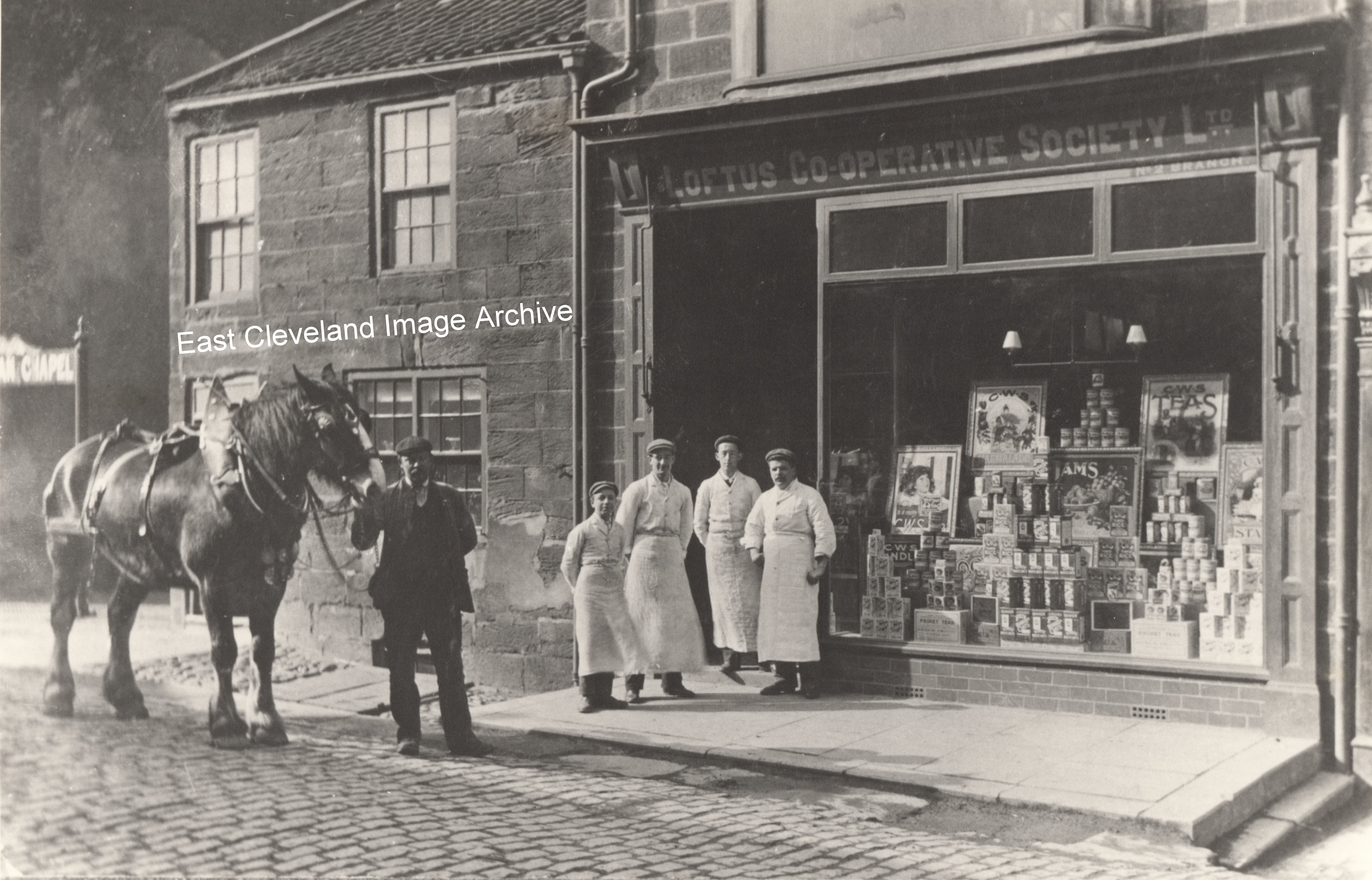
Staithes branch of the Loftus Co-op in 1908; following comments from Eric Johnson who directed our attention to the sign indicating chapel and Derick Pearson pointing out the blue flint bricks creating a different pattern to cobbles it can be confirmed.
Image courtesy of the David Linton Collection, also copies from the Pem Holliday Collection and Derick Pearson; also thanks to Eric Johnson, Derick Pearson and Julie Riddiough in solving our query.
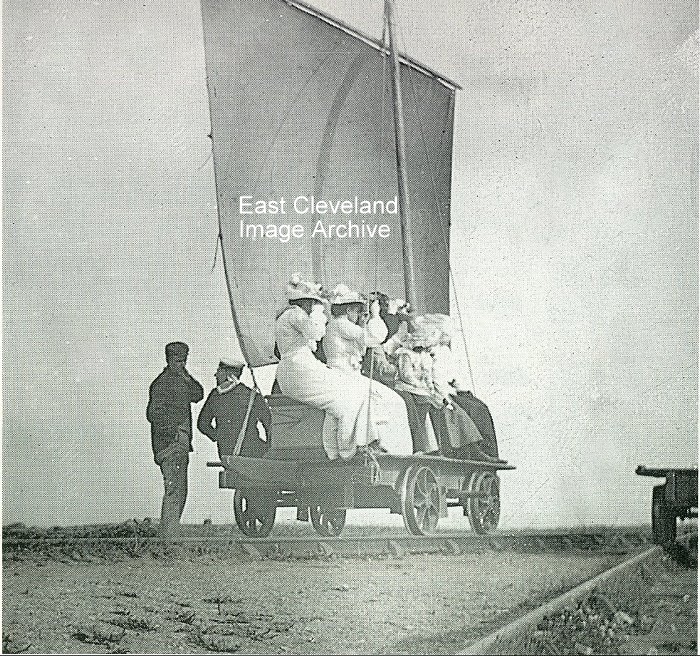
So you think that sand yachts are modern! This beautifully quaint contraption took V.I.Ps, Military servicemen and Lighthouse crew out to the Lighthouse and Gun installations at the end of South Gare. Robin Jones in ”Britain’s Bizarre Railways” has details of the South Gare Sail Trolley from the 1895 period. As we discover more details regarding the sail train which come to light we will update this comment. The sail trains apparently operated in other situations. We will be uploading the additional images and information shortly.
Image courtesy of Mike Holliday.
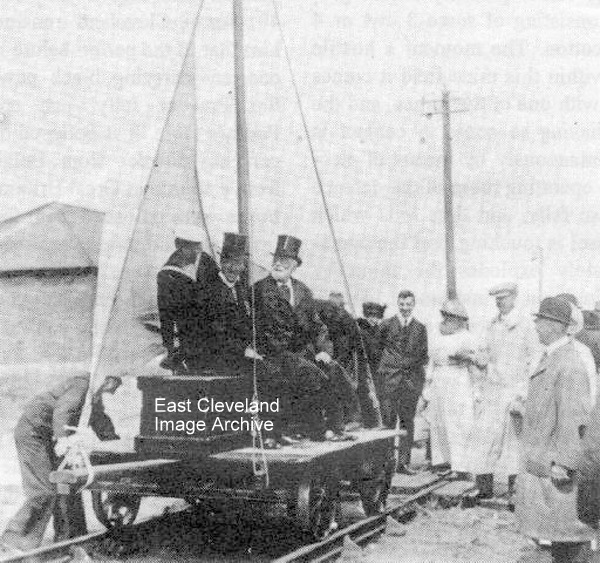
The lighthouse at the termination of the South Gare was supported by a sail train; this image is believed to be from the official opening to the Lighthouse at the South Gare. A similar conveyance operated to the Lighthouse at Spurn Point; instead of an Engine Driver, we have a sailor as Helmsman, we wonder what A.S.L.E.F (Rail Union) would make of it today?
Image courtesy of Mike Holliday.
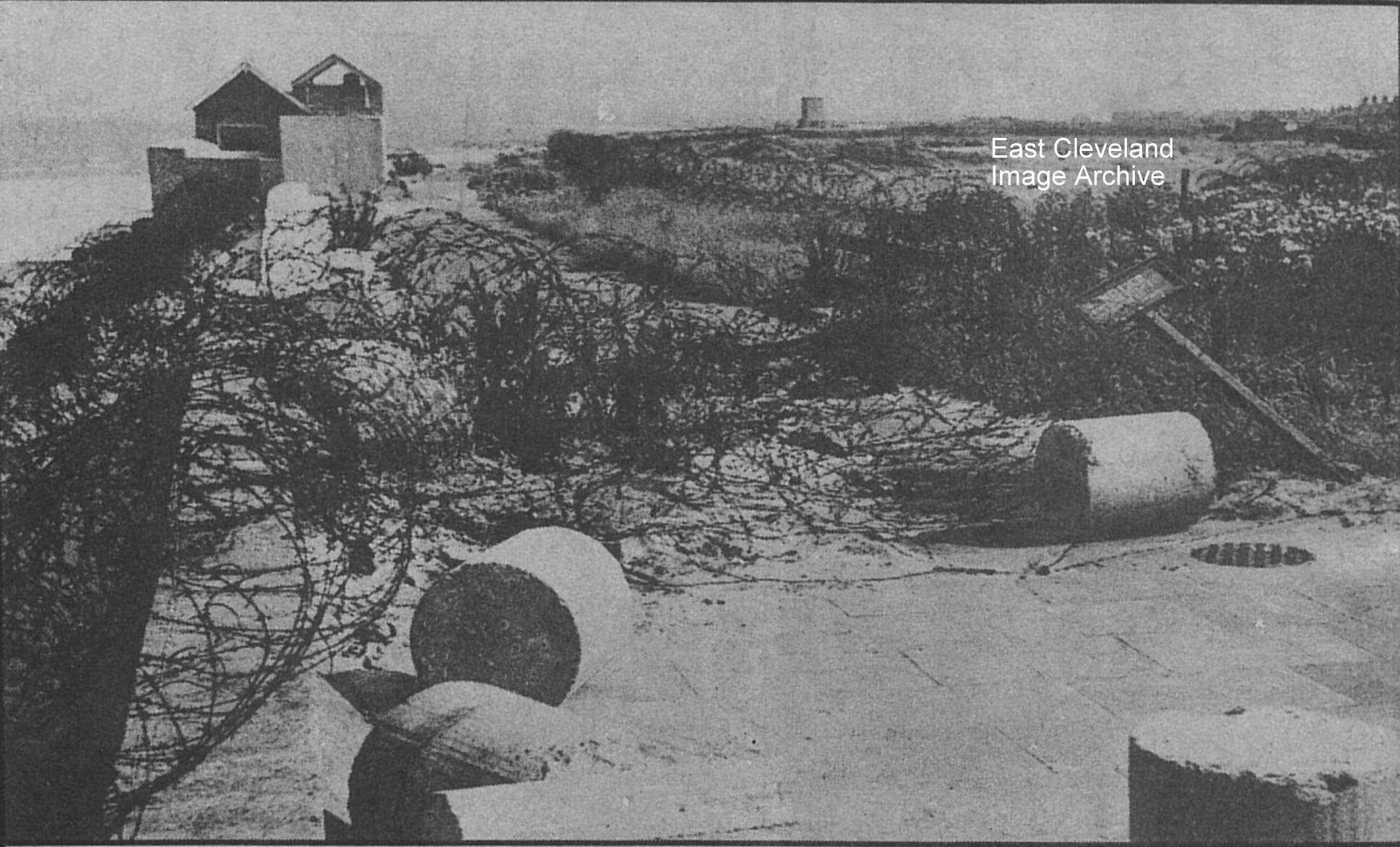
An image of The Stray at Redcar looking a lot different to The Stray today; coastal defences were an essential part of World War II, with the ever present threat of invasion.
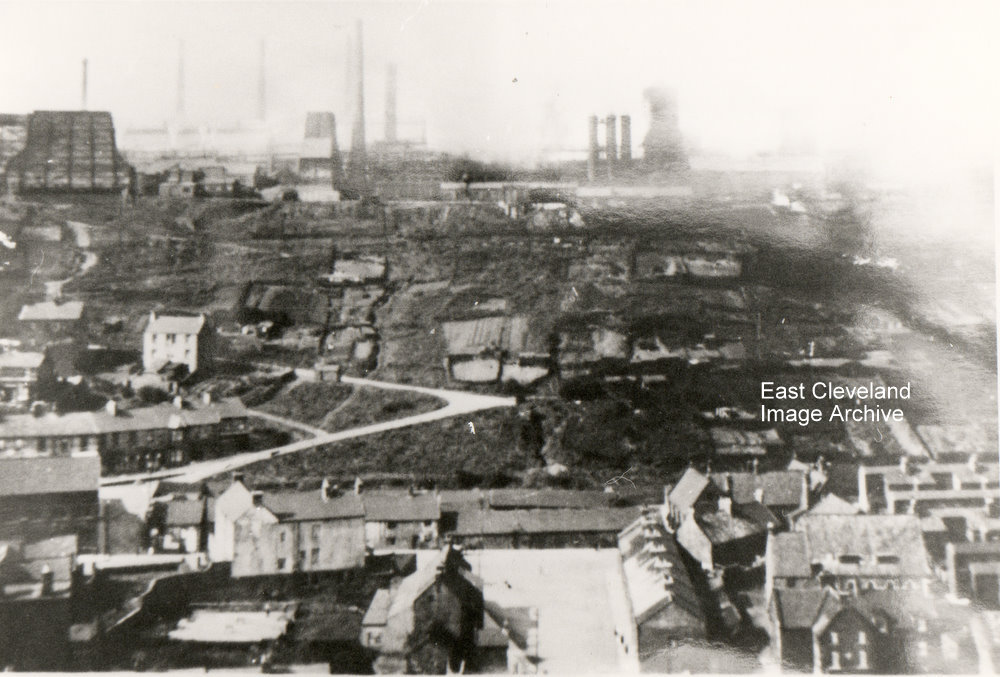
Originally entitled “The Furnaces Skinningrove” this is a different view of the square, front left of what is now the Post Office and shop with Nixon’s Bank leading up to Carlin how; as we start up the bank Hutton Street stands on the right hand side, sadly another piece of Skinningrove no longer standing. In front of Timm’s Coffee house can be seen the quoits pitch (which appear to be in use today), a popular pastime, after the pigeons, of course.
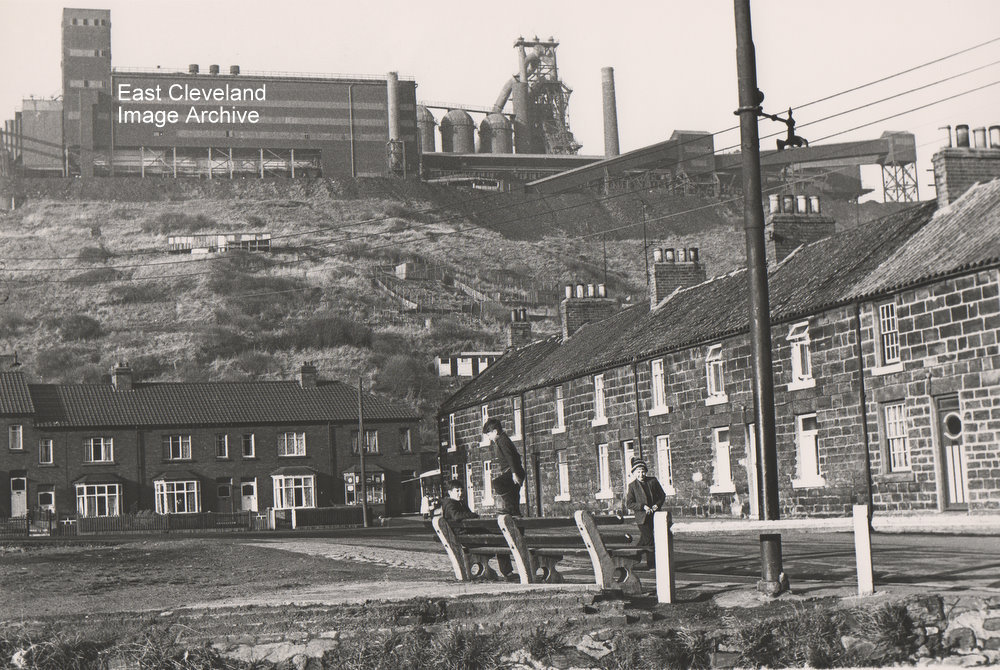
Some of the oldest houses in Skinningrove can be seen here on the right of the photograph, with the works are on the hillside in the background and I wonder what mischief the young boys were plotting?
Image courtesy of Ted Morgan, via Eric Johnson.
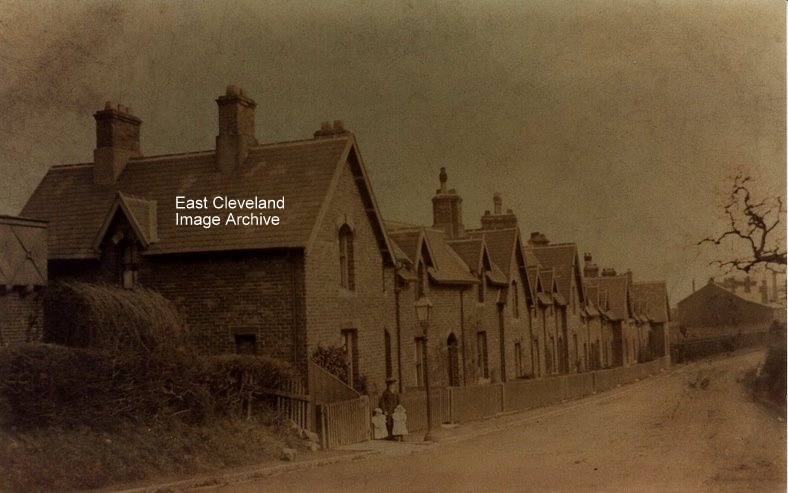
An early photograph of Railway Terrace, Brotton Road in Carlin How; the picture hides the then probably almost ”demonic” sight of the works behind this terrace for the railway workers houses which were separated from the works by the Saltburn to Whitby coast line. Neil Suckling tells us: ”The first house being the home of my great grandparents (Alf and Laura Suckling) from about 1885 till 1925, my grandad ,Andrew Suckling,was born there in 1902.” The 1911 Census lists the residents as: ’Alfred William Suckling (plate layer NER), Laura Suckling (Alfred’s wife), daughters Mary & Lydia, sons John & Andrew. All the children having been born in Carlin How.’ In later years Andrew Suckling was treasurer and Preacher at the High Street Methodist Chapel in Staithes.
At the extreme left of image is the water tank used by the locomotives to fill up before proceeding to Cragg Hall and the line towards Brotton. The building in the background (far right) was the engine shed built for the locomotives that worked the Skinningrove zig-zag. Until recently the floor, foundation stones, filled-in ash and inspection pits were all visible. (Information supplied by Mr Thompson, Derick Pearson and Neil Suckling)
Can anybody assist in identifying the lad and two small children included in the photograph.
Many thanks to Neil Suckling and Derick Pearson for updates. Also to Alison Crooks for her update which the Archive will follow up and be in contact.
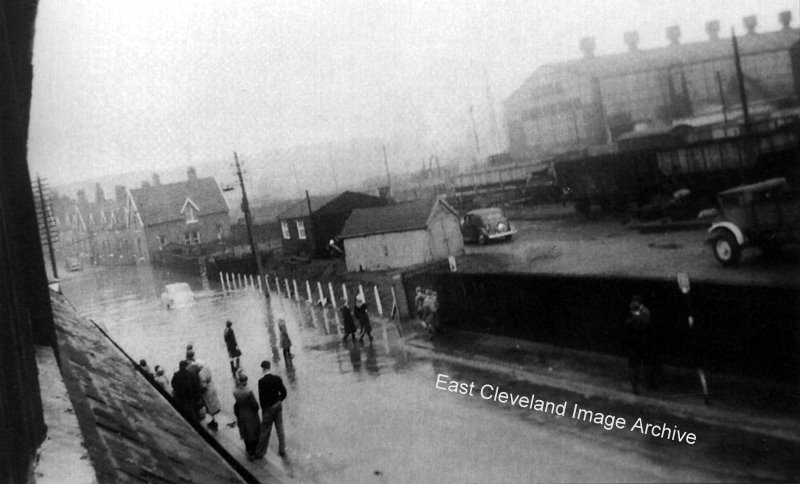
Believed to have been taken from Stan Ward’s bed-room window it certainly looks wet and watery – 14th January 1957 – thawing snow left over two feet of water on Brotton Road, Carlin How. Derick Pearson tells us: “I remember this incident well. Just past where the white car, to the right were some bays where the rail wagons seen on the right used to go over the top to tip coal into the bays below. They were of course flooded deeply and we as kids were sat on top of the bay walls watching the waves come in as the cars went by. As we moved I lost my footing and fell into the dirtiest, blackest water you could imagine. Apart from getting a couple of mouthfuls and feeling rather sick before I struggled out I looked like a wet chimney sweep. When I got home which “was just up the street from the garage” I got a hiding off my mother for falling in. I was hoping she would feel sorry for me!”
Details courtesy of Jean Wiggins and many thanks to Derick Pearson for the memories.
|
|










Recent Comments